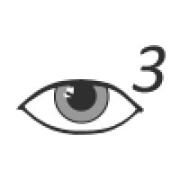AI Writing Tools streamline content creation by leveraging natural language processing to generate text, enabling efficiency and creativity in drafting various documents and marketing content.
AI Writing Tools cater to diverse sectors by automating content generation and offering stylistic consistency and grammar refinement. They incorporate user feedback, enhancing personalized writing experiences and providing real-time suggestions. With advancements in language understanding, these tools evolve to support a wide range of writing styles and formats, ensuring adaptability for businesses and individual users. Feedback from users highlights their role in boosting content quality and speed, with emphasis on the importance of customization and user-friendly interfaces.
What are the critical features of AI Writing Tools?In sectors like marketing, AI Writing Tools streamline campaign content creation, while in education, they assist with curriculum development. Customer service teams use these tools to generate responses, ensuring consistent communication.
Organizations benefit greatly from AI Writing Tools as they allow for streamlined content creation and editing processes while reducing operational costs associated with manual content development.
| Product | Market Share (%) |
|---|---|
| Google Gemini AI | 19.3% |
| Grammarly Pro - Enterprise | 14.0% |
| QuillBot | 10.1% |
| Other | 56.6% |











































Writing and Proofreading Tools are designed to assist users in improving the quality and accuracy of their written content. These tools utilize advanced algorithms and language processing techniques to analyze text and provide suggestions for improvement. Here is an overview of the different functions these tools employ:
Writing and Proofreading Tools are essential resources for individuals and businesses alike. These tools offer a wide range of benefits that can significantly improve the quality and accuracy of written content. From catching grammar and spelling errors to enhancing overall writing style, these tools are invaluable for anyone who wants to produce professional and error-free documents. Here are some key benefits of using writing and proofreading tools:
Writing and Proofreading Tools come in various forms, each designed to address specific aspects of the writing and proofreading process. Here are some of the different types of writing and proofreading tools available:
In the digital age, a variety of AI Writing and Proofreading Tools have emerged to assist writers in creating polished, compelling content. These tools can cater to different aspects of the writing process, from initial brainstorming to final edits.
Below are some prominent types of AI Writing and Proofreading Tools available.
1. Grammar and Spelling Checkers: These tools focus on correcting grammatical errors, punctuation, and spelling mistakes. Popular platforms like Grammarly and Hemingway Editor fall into this category. Grammarly offers advanced suggestions, including tone adjustments, while Hemingway highlights complex sentences and suggests simplifications for clarity.
2. Style and Readability Analyzers: These tools assess the overall readability and style of the text. Hemingway Editor, for instance, assigns a readability score based on the complexity of sentences and word choice. ProWritingAid is another comprehensive tool that not only checks grammar but provides detailed reports on style, including overused words, sentence structure, and readability.
3. Plagiarism Checkers: To ensure originality, plagiarism checkers like Turnitin and Copyscape compare written content against a vast database of published work. These tools are essential for academic and professional writing where originality is critical.
4. Collaborative Writing Platforms: Tools like Google Docs and Microsoft Word Online allow multiple users to collaborate on a document in real-time. They offer built-in commenting and suggesting features that make the collaboration process seamless and efficient.
5. Citation and Bibliography Managers: For academic writing, tools like EndNote, Zotero, and Mendeley help manage citations and generate bibliographies in various citation styles. These tools streamline the citation process, ensuring that references are correctly formatted and consistent.
6. Content Structuring Tools: These include mind mapping software like MindMeister and outlining tools like Scrivener. Such tools help writers organize thoughts and plan structures visually, which can be particularly beneficial for complex projects like books or research papers.
7. AI Writing Assistants: Sophisticated AI tools like OpenAI’s ChatGPT can assist not only in generating content ideas but also in drafting portions of text. These tools can simulate human-like writing, making them useful for brainstorming sessions, drafting, and even editing.
The array of AI Writing and Proofreading Tools available today can significantly enhance the writing process. From basic grammar checks to comprehensive style analysis and advanced AI assistance, these tools foster better writing and ensure polished, professional-quality output.
AI Writing and Proofreading Tools leverage advanced algorithms, machine learning, and natural language processing (NLP) to assist individuals in creating error-free text.
Here's an overview of how these tools function:
Writing Tools:
1. Real-Time Text Analysis:
2. Enhanced Vocabulary:
3. Formatting Assistance:
4. Content Structuring:
Proofreading Tools:
1. Error Detection:
2. Style Consistency:
3. Precision Edits:
4. Plagiarism Detection:
Integration and Use:
1. Cross-Platform Availability:
2. User Personalization:
AI Writing and Proofreading Tools enhance the writing process by providing sophisticated, AI-driven assistance for error detection, style consistency, vocabulary enhancement, and content structuring, ensuring high-quality text output.
AI Writing Tools can significantly enhance your content marketing strategy by providing data-driven insights, streamlining content creation, and improving SEO. They offer suggestions for engaging headlines, generate high-quality content drafts, and optimize for keywords, saving you time and ensuring your content reaches a wider audience. By analyzing trends and reader behaviors, these tools help tailor your content to meet audience preferences, ultimately boosting engagement and conversions.
What are the best AI Writing Tools for professional writers?Professional writers can benefit from using AI Writing Tools such as Grammarly, Jasper, and Writesonic. Grammarly assists with grammar and style improvements, Jasper generates content rapidly, and Writesonic offers templates for various writing needs. These tools help maintain a high standard of writing, assisting with everything from proofreading to content generation, allowing you to focus on creativity while ensuring technical accuracy and relevance. Choose a tool that aligns with your specific needs to maximize productivity and quality.
Are AI Writing Tools effective for improving SEO?AI Writing Tools are highly effective for improving SEO by automating keyword research, suggesting relevant content topics, and optimizing meta descriptions. They analyze competitors, identify high-performing keywords, and assess the readability of your content. By providing recommendations in real-time, these tools enable you to make informed decisions that enhance your site's visibility and ranking on search engines. Utilizing AI can give you a competitive edge in executing a targeted SEO strategy.
Can AI Writing Tools help with maintaining brand voice?AI Writing Tools can indeed assist in maintaining a consistent brand voice by learning and adapting to your preferred style. Tools like Grammarly and Copy.ai allow you to set tone preferences, which guides content creation and editing processes to align with your brand’s personality. These tools provide suggestions that help maintain uniformity across all written materials, ensuring that your brand voice remains distinctive and recognizable to your audience. Implementing these solutions can enhance brand loyalty and recognition.
What are the limitations of AI Writing Tools?While AI Writing Tools offer numerous advantages, they do have limitations. They may lack the nuanced understanding of context or cultural sensitivity required in some content. Additionally, AI-generated content can sometimes appear formulaic or lacking in creativity. There's also the risk of over-reliance, leading to diminished writing skills. It's essential to use AI as a complement to human creativity, ensuring that content remains authentic and engaging. Balancing AI assistance with personal input will provide the best results.